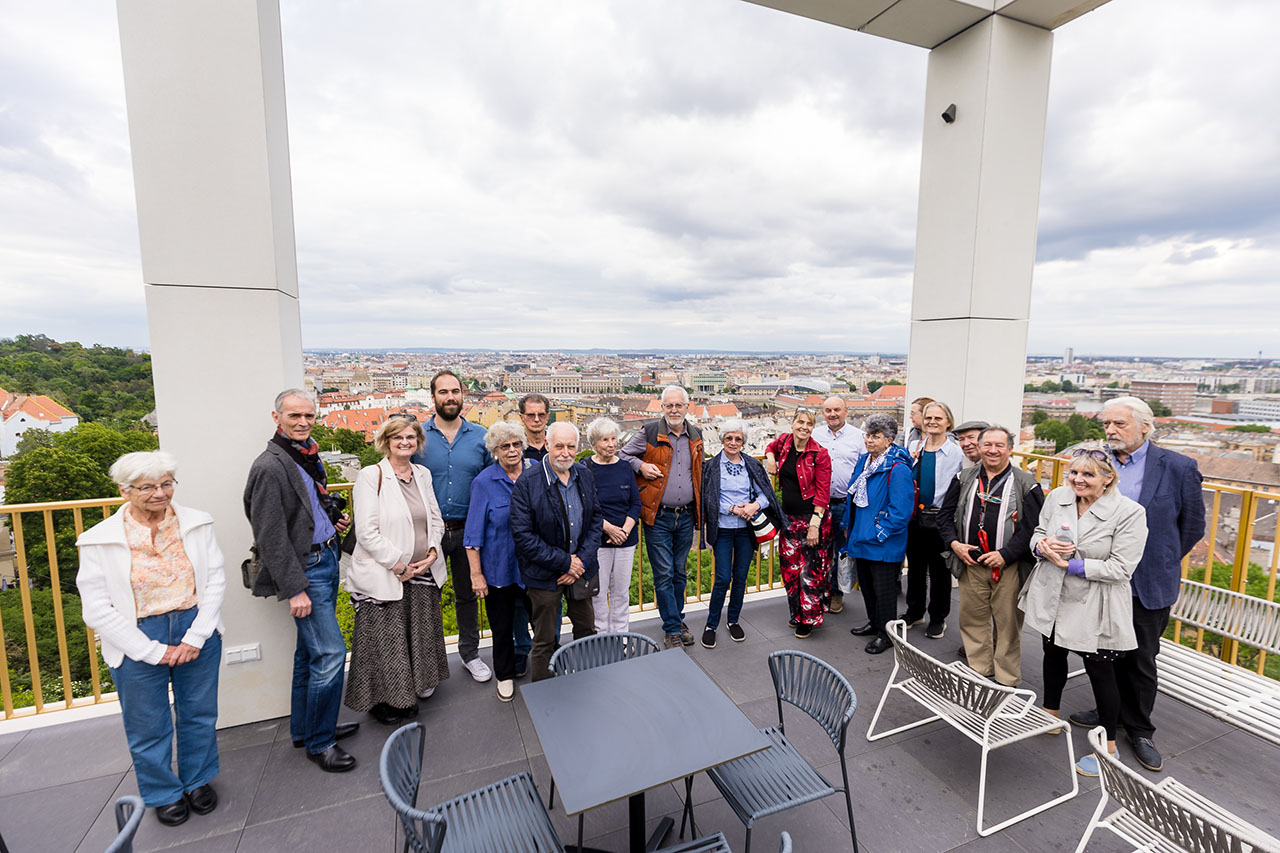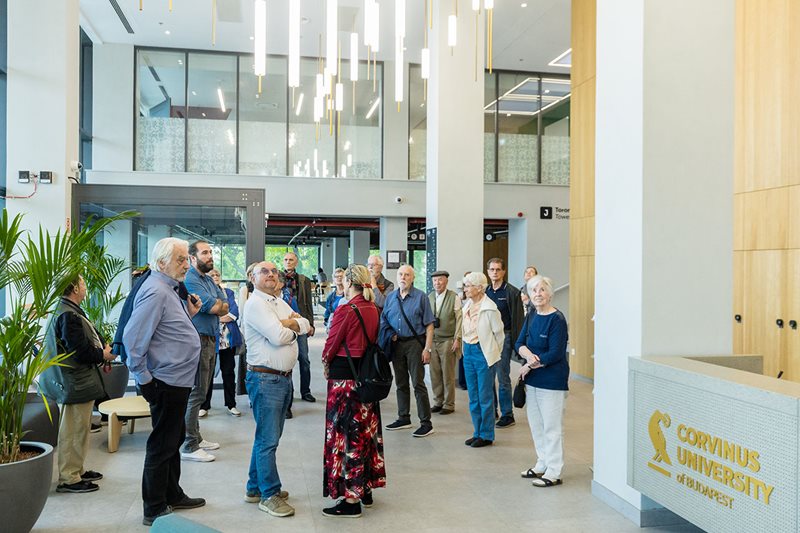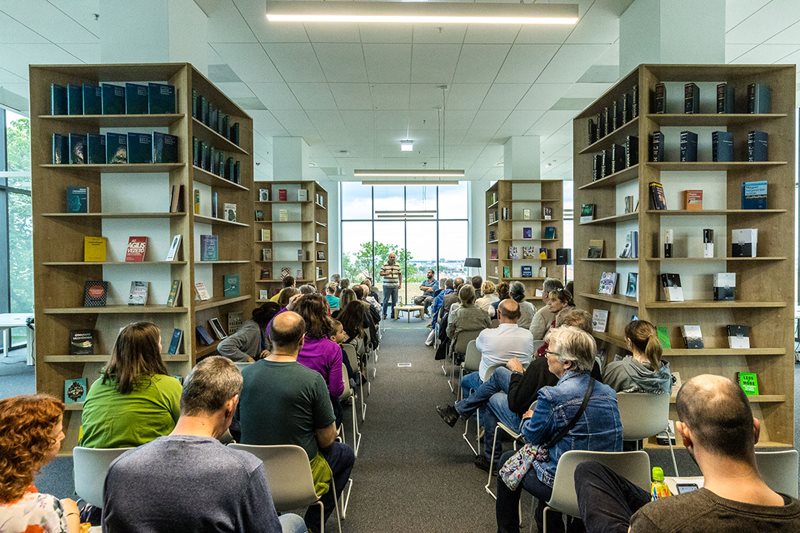Building community with Gellért Hill residents

It does not necessarily help good neighbourly relations if we engage in a construction project. At a recent programme, the University and the maintainer foundation showed to the most curious residents of Gellért Hill that the construction project was worth it, and that not only has a campus worthy of the hill been created, but the neighbourhood will also benefit from it.
On May 8, the Gellérthegy Protection Association was invited by the University for a tour in the campus, and the University’s strategic manager gave them an insight behind the scenes, explaining the planning and construction processes. The NGO was set up by residents to preserve the natural values of their neighbourhood, this is why it was important for them to see how our development would fit into the environment.

Several members of the group were nostalgic during the tour, recalling how things looked before the renovation. Some of them found community-building on campus a good initiative, while others took a bird’s-eye view of their own homes from the roof terrace of the Rooftop Café. While touring the building, they could alsosee the filming locations of the series titled ‘The Informer’.
Dialogue with the neighbourhood is important for the University and the foundation, so Márton Barta and Tibor Misovicz, Secretary of the Maecenas Universitatis Corvini Foundation, also spoke about the construction project in the Reading Space.
‘The foundation wanted to follow two principles that are important for the environment, too. One of them was to have a university function that points to the future. In close connection with that and the changes in our environment, we believe that the energy systems of the building must be radically renewed, so 21st century technologies must be used’ – explained Tibor Misovicz about the principles behind the investment. Márton Barta spoke about the concepts regarding the university of the future:
‘What should the university of the future be like? It should be easy-going, it should build on partnership, community and communication. The university is not a closed ivory tower, but an institution of knowledge that breathes together with the outside world.’

It was then up to the audience to share their views on the Campus. They were pleased to hear that the sports facilities would be accessible to everyone. In addition, they noted with satisfaction that the park and the Fresh Corner café would be also open to the public, supporting connection with the local community. As an element to be improved, it was mentioned that the lights that stay on in the evening and at night can be disturbing for some residents. Márton Barta and Tibor Misovicz promised to solve the problem with external and internal shading and by optimising the lighting, and to try and find a solution that takes into account the interests of the residents.